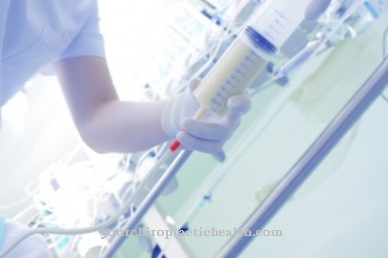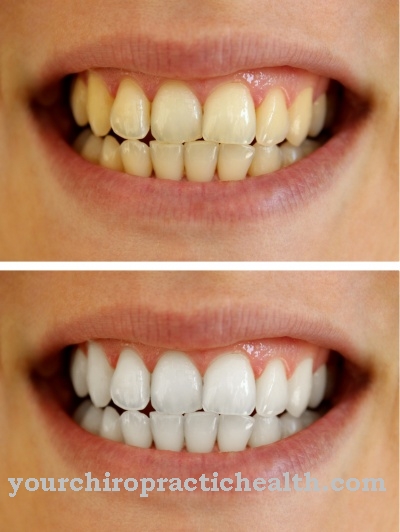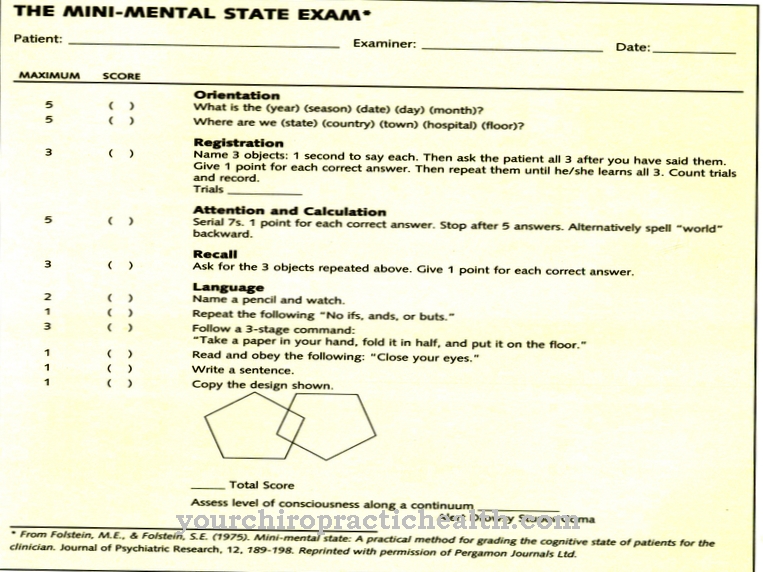The Rhinoscopy is an instrumental examination method for assessing the main nasal cavity. As a rule, rhinoscopic visual controls are part of the routine procedures in ENT medicine and are associated with correspondingly low risks and complications.
What is rhinoscopy?

As Rhinoscopy the visual inspection or mirroring (copy) of the nose (rhino) is called, within the framework of which the anatomy and condition of the inside of the nose, in particular the main nasal cavity, can be checked and evaluated.
In general, a distinction is made between anterior (anterior rhinoscopia), middle (rhinoscopia media) and posterior (rhinoscopia posterior) rhinoscopy, depending on the nasal segment to be inspected.
In addition to otoscopy (otoscopy), rhinoscopy is one of the standard and routine examination procedures in ENT medicine and enables the diagnosis of various causes of illness and complaints such as foreign bodies, tumors, sources of bleeding, malformations, new tissue formation and inflammatory changes.
Function, effect & goals
By a Rhinoscopy an assessment of the anatomical-structural nature of the inside of the nose, in particular the nasal mucosa, the nasal septum and the nasal secretions, is made possible.
In addition, accumulations of blood and pus, swellings of mussels and mucous membranes, mucous membrane ulcers, anatomical malformations, polyps, tumors and / or foreign bodies can be detected. Rhinoscopy is the basic examination for making a diagnosis, especially if you suspect an inflammation of the maxillary sinus (maxillary sinustitis).
In general, a distinction is made between anterior, middle and posterior rhinoscopy, depending on the nasal area to be examined. As part of anterior rhinoscopy, a so-called nasal speculum, a forceps-like instrument, at the end of which is a small funnel and a light source to widen the nasal openings and remove tissue (biopsy), is inserted into the nostril. The anterior rhinoscopia is used to assess the nasal vestibule (nasal vestibule), Kiesselbachi locus (anterior third of the nasal septum orthe nasal septum), nasolacrimal duct (lacrimal nasal duct), inferior turbinate and the inferior septum segments.
Blood obstructing the view, crust or mucus formations can be carefully wiped away or suctioned off. If there are inflammatory changes, a smear can be taken and the material removed can then be analyzed in a laboratory. In contrast, an elongated nasal speculum or a nasal endoscope, which consists of a flexible plastic tube or a rigid metal tube as well as a light source and camera, is used in medium rhinoscopy. The middle rhinoscopy is used in particular to evaluate the main nasal cavity (Cavum nasi), the infundibulum nasi and the posterior nasal passages.
In addition, pathological changes in the area of the paranasal sinus exits (sinus paranasales) can be detected by means of a medium rhinoscopy. In posterior rhinoscopy, the choanas (posterior nasal cavity openings), the posterior turbinate and septal segments, and the nasopharynx are inspected. For this purpose, a mirror at an angle of about 120 degrees is inserted through the oral cavity, while the tongue is pressed down with the pressure of a spatula, so that during the examination breathing is made possible through the nose through which between the sagging soft palate (velum palatinum) and the posterior pharynx wall large distance arises.
The posterior rhinoscopy determines whether purulent nasal secretions are leaking from the maxillary sinus (maxillary sinus), ethmoidal sinus (ethmoid sinus) or sphenoid sinus (sphenoid sinus). In addition, tumors (including adenoid growths), septal deviations (curved nasal septum), enlarged tonsils (tonsilla pharyngealis), polyps and thickening of the posterior turbinate ends can be diagnosed with a posterior rhinoscopy.
Risks, side effects & dangers
Rhinoscopic Examination procedures are usually painless and free of side effects and associated with few complications. Different instruments to be selected depending on the size of the nostrils ensure a low risk of injury.
In addition, during rhinoscopy, care should be taken to ensure that pressure is exerted on the comparatively insensitive nostrils when the speculum is spread, in order to avoid damaging the sensitive nasal septum. If there is inflammation and / or swelling in the area of the nasal mucous membranes that make an examination difficult, a decongestant or anesthetic nasal spray can also be used.
If there is insufficient insight into the nasopharyngeal space due to a pronounced gag irritation with simultaneous lifting of the soft palate (palatum molle), a so-called velotraction may be indicated during posterior rhinoscopy. Here, following surface anesthesia, a thin rubber catheter is inserted nasally to pull the soft palate forward.
A larger mirror can be used due to the increased space. In addition, if the insertion of a rigid nasal endoscope is found to be uncomfortable, the nasal mucous membranes can be anesthetized in advance of the rhinoscopy.



























